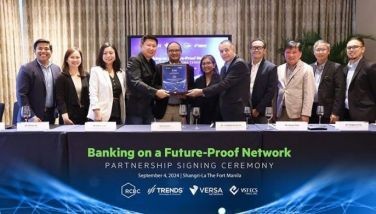Reinventing insurance for the living
This Christmas, Benny Reyes is gifting his teen-aged daughter with a life insurance policy, among other gifts. “I know she’s not going to appreciate it now but I’m thinking long-term. But by the time the policy matures, I hope she remembers me and her mom when she uses the money to, maybe, start a business or go on a trip abroad with her own family,” he said.
Reyes is one of the growing number of Filipinos who see life insurance policies as benefiting the person who buys the policy or the person gifted with the policy.
Many Filipinos today benefit from their own life insurance policies while they are still alive. Longer life expectancy is one factor. Filipinos are living longer because of medical advances and better health care. A wider array of life insurance products with higher yields than the one percent interest offered by savings deposit accounts is another factor. Today, variable universal life (VUL) products where the premiums of policyholders are invested in financial instruments like stocks and government securities, are sold by 10 insurance companies and account for 26.54 percent of total industry sales.
“There has been a shift in the way life insurance is being marketed. Before, life insurance was purchased to help the loved ones cope financially when the policyholders passed away. Today, life insurance is for the living. The buyer can cash in on his life insurance to put up a business, to send a grandchild to school, even to have a second honeymoon,”said Rizalina Mantaring, chief operating officer of Sun Life Financial Philippines (SLFP), one of the country’s oldest and largest insurance companies, with revenues of close to P14 billion in 2006 from its core products of life insurance, pre-need, and mutual fund.
Over time, new products such as VUL are expected to raise market acceptance of insurance, which is far behind Japan and other south east Asian countries. In Japan, for example, the assurance rate is 100 percent; in the Philippines, it is only four percent.
“People often say life insurance is costly. Yet, they have money to splurge in the malls. When an emergency comes, that is when they realize the importance of life insurance,” said Mantaring.
In an effort to grow its customer base, SFLP has been educating its existing clients to not just avail of life insurance packages but to look into assured placements in blue chip investments and stocks to make their money grow faster than inflation.
Now one may ask, “how do I know what kind of investment is best for me?”
This is a query not heard often enough from new investors. Individuals new to the whole process of investing often look at yields or returns as the primary indicator of where to invest. Yields, however, are just one of the considerations in finding the right investment product.
There are many factors to think about in investing, but the three most important ones can be summarized with the acronym S-L-Y. The S-L-Y principle of investing focuses on safety, liquidity, and yield as fundamental issues to consider.
Safety refers to how much of the original investment amount can remain intact after being invested. Short-term instruments are generally safer than long term instruments. Money left in an ordinary savings account is considered “safe” because even if the bank fails, one’s money is insured with the Philippine Deposit Insurance Corp. (PDIC) up to P250,000. Other safe instruments include government securities such as Treasury Bills and Retail Treasury Bonds, because these kinds of investments are guaranteed to be paid by the government. On the other end of the safety spectrum are stocks and speculative investments. The value of these types of instruments are volatile and investors can lose money if they are not careful.
Liquidity refers to the ability to convert one’s investments to cash without loss in value. Again, money in deposit accounts are very liquid, as one can withdraw money through ATMs (automated teller machines) usually without having to pay any charge or fees. Time deposits or special savings accounts are not so liquid, since one incurs a penalty if one decides to withdraw before the maturity date. Bonds and stocks are even less liquid since there is no definite assurance of being able to sell the securities at a price equal to or greater than the purchase price. Real estate investments are among the most illiquid as they can take time to dispose of and may result in huge losses in the event of a prolonged depressed market.
Having said all that, one now has to balance both safety and liquidity with the third consideration in choosing an investment instrument yields.
As a general rule, the higher the risk, the higher the return. This is why stories abound of people winning big investing in stocks, as well as literally losing the shirts off their backs playing around with this type of investment. Then again, nobody ever got rich by putting their money in bonds alone, much less in savings accounts.
Sun Life Asset Management Co.’s (SLAMC) Balanced Fund has historically carried the unique characteristics of having both good yields and being reasonably safe. According to Sun Life’s chief investment officer, Michael Manuel, this is because it is actively managed, unlike other balanced funds which simply place half its funds in stocks and the other half in cash or bonds. SLAMC’s fund managers can put as high as 80 percent or as low as 20 percent in equities, depending on market conditions.
In the end, the SLY principle acts only as a starting guide (other considerations include investment management expertise, capital requirements, tax treatments, etc.) to help one decide which factors to take note of. Knowing how safe, liquid, or high-yielding one’s own investments should be will still remain an individual and very personal choice.
- Latest

























